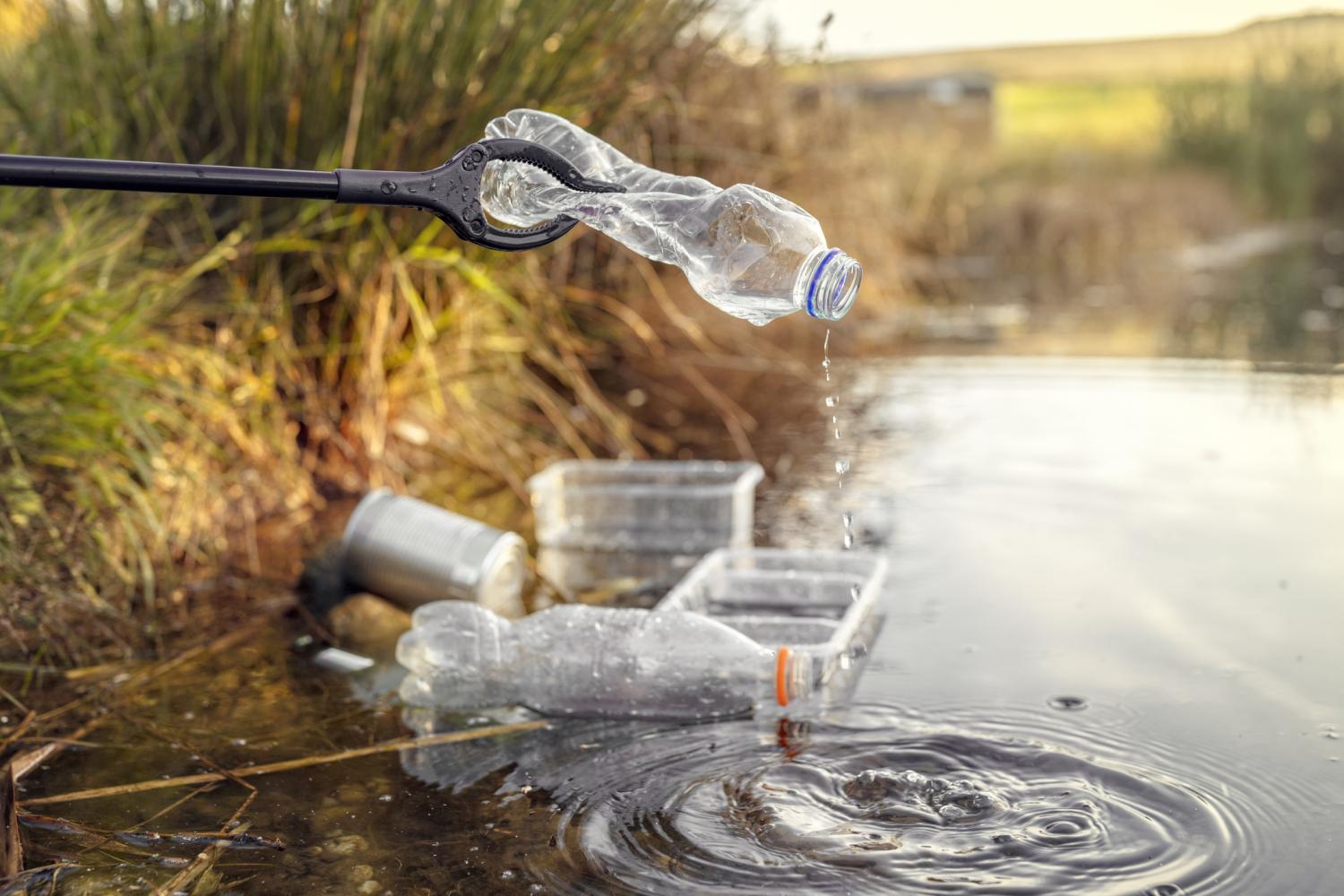New research conducted in the United Kingdom provides another reason to be concerned about the proliferation of plastic in the environment.
In a study published today in Microbiome, a team led by researchers from the University of Warwick found that new and degraded plastics submerged for a week in a river harbored opportunistic "microbial hitchhikers" like Pseudomonas aeruginosa and Acinetobacter baumannii, as well as a distinct set of antibiotic resistance genes (ARGs). The study authors say the findings highlight concerns that the "riverine plastisphere" could serve as a reservoir of antibiotic resistance.
"The environmental impact that plastics pose if they act as a reservoir for either pathogenic bacteria or ARGs is aggravated by the persistence of plastics in the environment due to their recalcitrance and buoyancy," the study authors wrote.
But the authors also note that the study highlights the potential for opportunistic pathogens and ARGs to flourish throughout the freshwater environment.
Different pathogens grow on plastic
To investigate the potential for river plastics to serve as vectors for pathogenic bacteria and reservoirs for ARGs, the researchers submerged strips of low-density polyethylene (LDPE)—the type of plastic used for plastic bags, shrink wrap, and thin container lids—for 7 days in the River Sowe, 1 kilometer (0.6 miles) downstream from a wastewater treatment plant. Some of the strips had been heated in an oven for 6 months to mimic the weathering processing that occurs in nature. Pieces of wood were used as a control surface.
After a week in the water to establish biofilms on the plastic and wood samples, the researchers extracted DNA from the microbial communities and conducted a metagenomics analysis, comparing the diversity of the microbes that grew on the wood and plastic sample with that of the surrounding water (the planktonic environment).
The microbial communities that developed on the plastic and wood were similar to one another but quite different from those in the water samples. On the wood and plastic samples, species like Pseudomonas, Acinetobacter, and Aeromonas predominated, with Pseudomonas being more abundant on the weathered plastic—a finding the study authors suggest could be linked to the release of organic compounds that encourage the growth of specific bacteria.
The environmental impact that plastics pose if they act as a reservoir for either pathogenic bacteria or ARGs is aggravated by the persistence of plastics in the environment due to their recalcitrance and buoyancy.
The water samples, on the other hand, were dominated by pathogenic species like Escherichia, Klebsiella, Salmonella, and Streptococcus, which were also found in wood and plastic biofilms but in much lower abundance. The wood and plastic samples also contained more ARGs, and different ARG subtypes, than the water samples. The relative abundance of ARGs was clearly higher in the weathered plastic biofilms than in the other biofilms or the water samples.
In an additional experiment, the researchers found that exposing the plastic, wood, and water samples to sub-inhibitory but clinically relevant antibiotic concentrations—the kind that have been found in studies of wastewater and river sediment—increased the prevalence of their corresponding ARGs. But the different microbial communities in the samples were affected differently by each antibiotic.
Assessing the health risk
The findings are noteworthy both because of the sheer volume of plastic debris that rivers carry to oceans each year (as much as 2 million metric tons, by some estimates) and the known ability of microbes to colonize plastic once it enters the water. In addition, the authors note that plastics may facilitate the horizontal transfer of ARGs to pathogenic bacteria.
But the authors say it's too early to determine whether plastics can spread infection-causing, antibiotic-resistant bacteria and to quantify the health risk posed by plastic pollution.
"For this, additional assessments are needed to determine the actual pathogenicity of microbes within the plastisphere; these should take into account the potential transfer and ability to cause disease to the host organism—be it human, animal, or plant," they wrote.
In addition, the abundance of opportunistic pathogens and ARGs found in the wood and water samples suggest future studies need to examine the entire river ecosphere as a potential reservoir for resistant pathogens.
"Our data highlight the importance of integrating the information from all co-occurring compartments within an anthropogenically-impacted ecosystem and show that the implementation of health and safety measures against the presence of pathogens and ARGs seems to be an issue that goes beyond the plastisphere," they concluded.




















